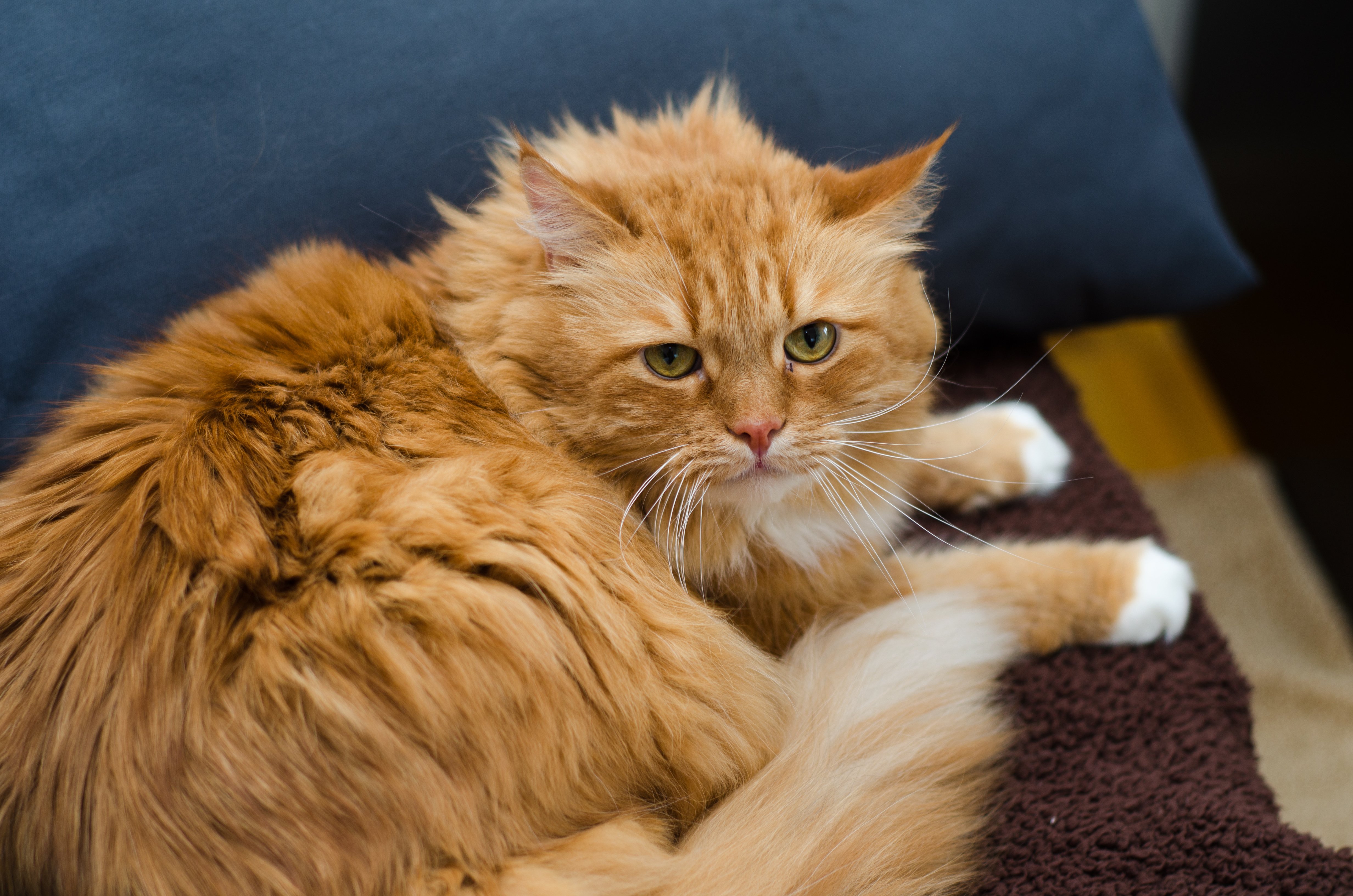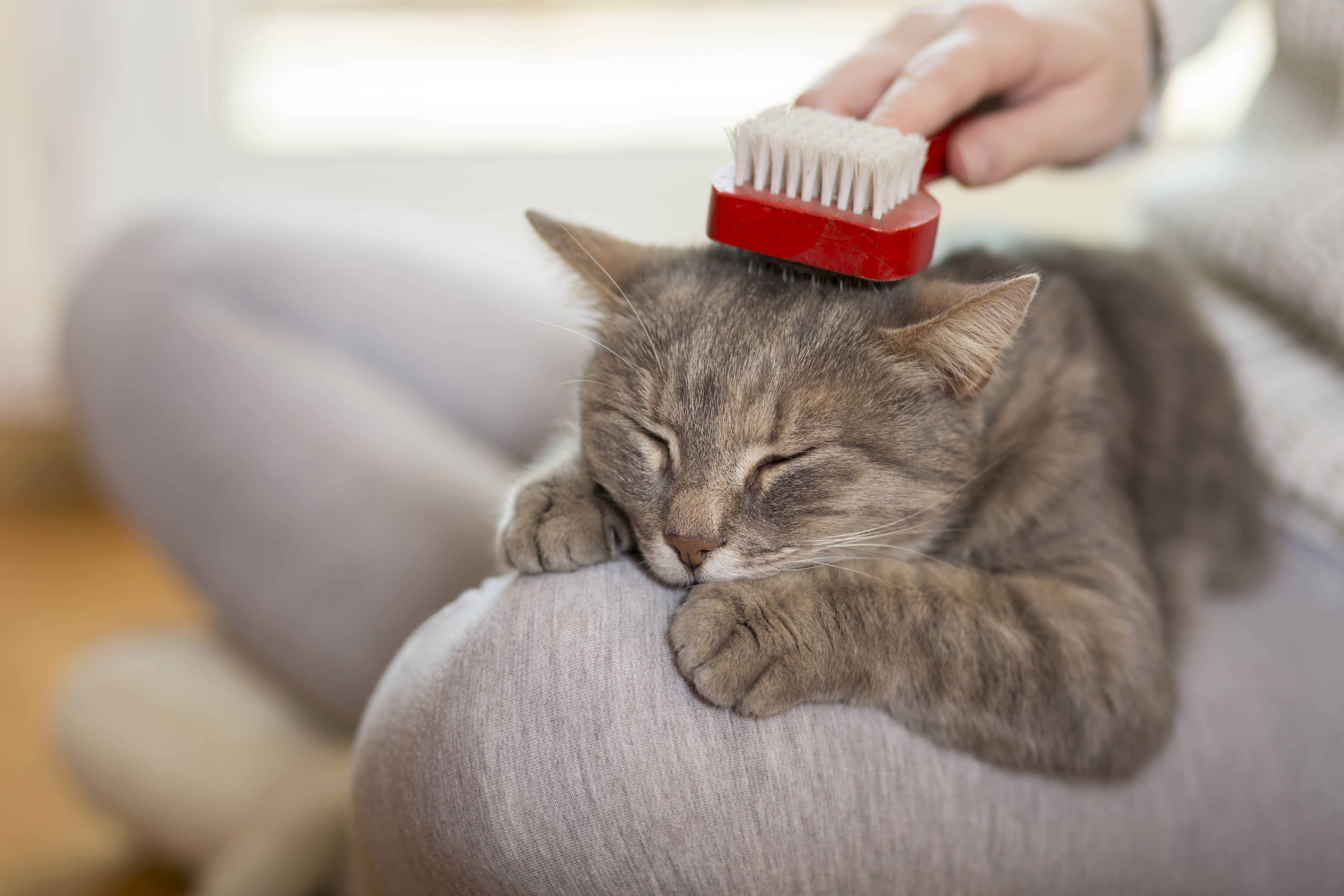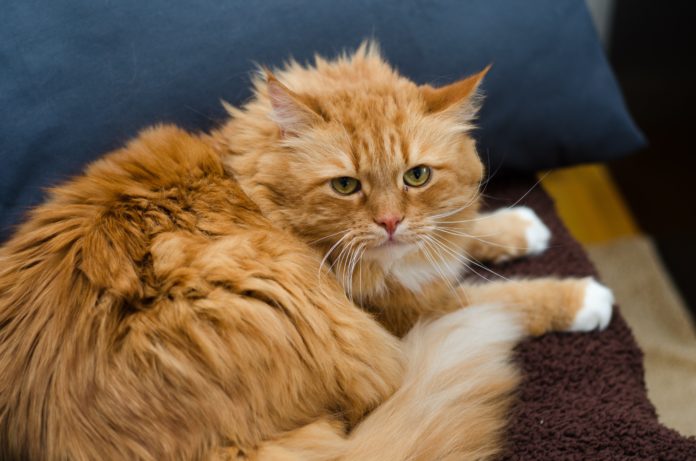
While longhaired cats require the most upkeep, mats and tangles can be an issue for all cats. Older cats that are developing osteoarthritis start to have trouble bending to groom their entire bodies, with the hind end being a popular spot for mats and dandruff.
Overweight cats can also have trouble grooming themselves, because large fat deposits prevent them from bending to reach their backs and hind end. Mats and tangles will only get worse if left alone, so once they develop your cat will need some help from you. If he continues to chew, he’s opening the doorway for bacteria and fungi to take hold.
Mats can cause physical problems, including skin irritation, skin infections, and even a smelly problem sometimes called “external constipation,” which occurs when feces gets caught in the fur around the anus making it difficult for an affected cat to defecate.
Your solution is to implement a regular grooming time and process.
Regular Brushing
-Brush long, soft coats daily; weekly will work for most others.
-Work brushing your cat into your normal routine; consider keeping a brush easily accessible in a spot your cat frequents, such as next to your chair if she’s a lapkitty.
Detangle Gently
-Separate small knots by hand. Grasp the hair beneath the knot and slowly pull out a few strands at atime.
-Make sure that while pulling, you exert pressure on the knot rather than your cat’s skin.
-A brush or comb works best for large tangles. Separate the hairs, starting from the bottom/edge and working up into the tangle.
-Stripping tools or dematters can help break up mats. Again, work your way into the tangle from thebottom.
-Break sessions into smaller time periods. Long sessions may not be comfortable for your cat.

Helpers
-A cat-specific detangling spray or oil can help to loosen up larger knots. Rub a little into the bottom of the mat, let it sit for a few minutes, then start working it apart with your fingers or a good grooming tool. Do not use a product for another species, as it may harm your cat.
-Cornstarch can also help. Gently work the cornstarch into the mat to help loosen the hairs.
Scissors or Clippers
-Scissors can help. Trim with caution. Isolate the mat with your fingers, holding the hairs at the base with one hand, or a comb, if it will slide under, to protect your cat’s skin from being injured as you cut with the other hand.
-Wait until your cat is still before cutting—a wiggling cat can easily get in the way of the scissors.
-Electric clippers may be the only option for mats that go all the way down to the skin. Be sure your cat gets used to the sound before you attempt to use them, and use these cautiously, as they can irritate a cat’s skin if not used properly.
-Use short sessions. Your cat’s tolerance will be even less than usual, plus clipper blades can quickly become hot to the touch.
-Shaving may leave some temporary unsightly bald spots.
-If all else fails, consider having your veterinary clinic staff or a professional groomer do the job. It will be worth the cost in the longrun.




